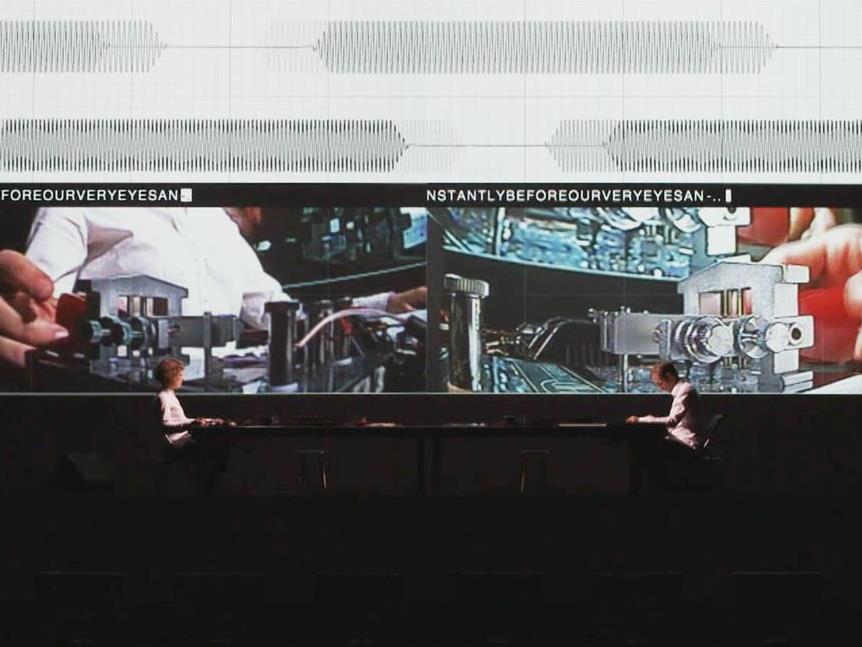Ryoji Ikeda, Superposition. Image credit: Kazuo Fukunaga, Courtesy the Artist and Kyoto Experiment
After his successful showing in 2013, Ryoji Ikeda is returning to Carriageworks for his next production superposition, to premiere in September next year.
Beatrice Gralton, Visual Arts Curator at Carriageworks said that Ikeda’s previous commission test pattern [No5] was a huge success and attracted a lot of audiences because of its interactive nature.
test pattern [No5] was a vast, audio-visual installation that converted data into barcode and binary patterns of 0s and 1s.
‘It was an enormous piece, visually overwhelming and there was a sensory overload too – the sound of the project was loud, but precise.
‘It was incredibly interactive and I think people really enjoyed locating themselves within that work,’ said Gralton.
She says that in 2013 they were already in talks with Ikeda to present again.
‘He suggested a work that he was developing and which was first presented in 2012 in France, and next year will be the first time it’ll be presented in Australia.’
For the first time in Ikeda’s work, two live performers will generate movement and sound during an hour-long performance. The actions of these performers will generate visual elements (i.e. words, numbers, type-written phrases) on 21 screens on the stage.
These movements will then be translated in real-time into computer data codes that will be re-screened on stage alongside various other graphical materials.
Ikeda said the classical language of information is BIT (binary digits) — 0 or 1, which is the most fundamental building block of our judgement and logical thoughts.
‘The project superposition explores a new notion of information: quantum information. The language of this is QUBIT (quantum binary digits) — 0 and 1 superposed at the same time.
‘It’s a new way for us to capture the truth of nature at an extremely small sub-atomic scale — such as behaviors of photons or electrons.
‘Quantum computing is to read how sub-atomic particles behave by means of the language of QUBIT; i.e. Nature computes. We decipher it,’ says Ikeda.
He believes that we forcefully try to understand and demystify nature by means of our scientific knowledge.
‘superposition is inspired by all these thoughts and is foolhardily and quixotically aiming to explore the new kind of information through art.’
Gralton said that the three-layered video ensemble will be a sensory treat sure to be a hit with audiences again.
Using detailed floor plans sent by the artist to help set up his work, Gralton said having a prior working relationship with Ikeda has been a big help.
‘I’m not a mathematician or a scientist myself, but Ryoji’s mathematical knowledge and how he translates that into artwork through music, light and sound is quite extraordinary.
‘He is definitely using mathematical formula to build the score. All the elements on the stage – the sound, the lights, the video and the set are all very precisely co-ordinated to an end,’ said Gralton.
superposition premieres at Carriageworks in September next year. To know more click here.
Here is a short video clip of Ikeda performing at a Sonar Festival in Barcelona in 2010.
test pattern [No5] was created and developed at EPPGH La Villette, YCAM Yamaguchi Center for Arts and media) and ZKM. Production by Ryoji Ikeda Studio, Quaternaire and Forma Arts with coproduction from Festival dʼAutomne à Paris, Les Spectacles Vivants – Centre Pompidou, Barbican, Concertgebouw Brugge, Festival de Marseille, Parc de La Villette, Kyoto Experiment, ZKM, STRP Art and Technology Festival. Support from the DICRéAM-CNC.





